Country rock is a music genre that fuses rock and country. It was developed by rock musicians who began to record country-flavored records in the late 1960s and early 1970s. These musicians recorded rock records using country themes, vocal styles, and additional instrumentation, most characteristically pedal steel guitars. Country rock began with artists like Buffalo Springfield, Michael Nesmith, Bob Dylan, Nitty Gritty Dirt Band, the Byrds, the Flying Burrito Brothers, The International Submarine Band and others, reaching its greatest popularity in the 1970s with artists such as Emmylou Harris, the Eagles, New Riders of the Purple Sage, Linda Ronstadt, Little Feat, Poco, Charlie Daniels Band, and Pure Prairie League. Country rock also influenced artists in other genres, including The Band, the Grateful Dead, Creedence Clearwater Revival, The Rolling Stones, and George Harrison's solo work, as well as playing a part in the development of Southern rock.
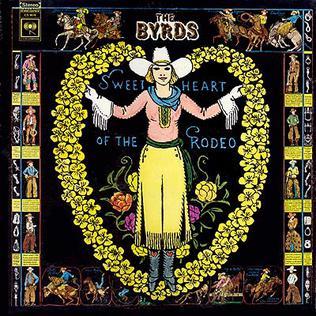
Sweetheart of the Rodeo is the sixth album by American rock band the Byrds and was released in August 1968 on Columbia Records. Recorded with the addition of country rock pioneer Gram Parsons, it became the first album widely recognized as country rock as well as a seminal progressive country album, and represented a stylistic move away from the psychedelic rock of the band's previous LP, The Notorious Byrd Brothers. The Byrds had occasionally experimented with country music on their four previous albums, but Sweetheart of the Rodeo represented their fullest immersion into the genre up to that point in time. The album was responsible for bringing Parsons, who had joined the Byrds in February 1968 prior to the start of recording, to the attention of a mainstream rock audience for the first time. Thus, the album is an important chapter in Parsons' crusade to make country music fashionable for a young audience.

Alvis Edgar "Buck" Owens Jr. was an American musician, singer, songwriter, and band leader. He was the lead singer for Buck Owens and the Buckaroos, which had 21 No. 1 hits on the Billboard country music chart. He pioneered what came to be called the Bakersfield sound, named in honor of Bakersfield, California, Owens's adopted home and the city from which he drew inspiration for what he preferred to call "American music".
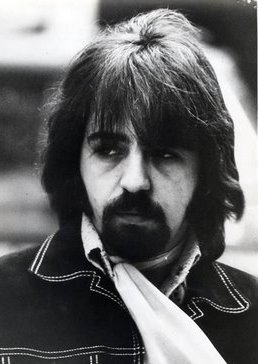
Clarence White was an American bluegrass and country guitarist and singer. He is best known as a member of the bluegrass ensemble the Kentucky Colonels and the rock band the Byrds, as well as for being a pioneer of the musical genre of country rock during the late 1960s. White also worked extensively as a session musician, appearing on recordings by the Everly Brothers, Joe Cocker, Ricky Nelson, Pat Boone, the Monkees, Randy Newman, Gene Clark, Linda Ronstadt, Arlo Guthrie, and Jackson Browne among others.

Safe at Home is a 1968 album by country rock group the International Submarine Band, led by the then-unknown 21-year-old Gram Parsons. The group's only album release, Safe at Home featured four of Parsons' original compositions rounded out by six covers of classic country and rock and roll songs made famous by the likes of Johnny Cash, Elvis Presley, Merle Haggard, and Hank Snow. Described as "hippie and hillbilly in equal measure", the album helped to forge the burgeoning country rock movement of the late 1960s and early 1970s.

Dr. Byrds & Mr. Hyde is the seventh studio album by the American rock band the Byrds and was released in March 1969 on Columbia Records. The album was produced by Bob Johnston and saw the band juxtaposing country rock material with psychedelic rock, giving the album a stylistic split-personality that was alluded to in its title. It was the first album to feature the new band line-up of Clarence White (guitar), Gene Parsons (drums), John York (bass), and founding member Roger McGuinn (guitar). Dr. Byrds & Mr. Hyde is unique within the band's discography for being the only album on which McGuinn sings the lead vocal on every track.
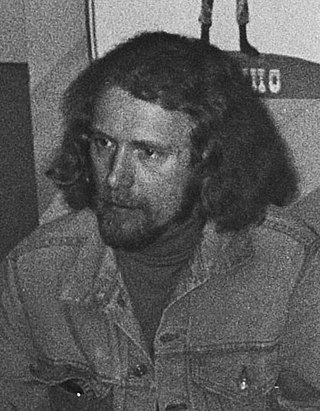
Peter E. "Sneaky Pete" Kleinow was an American country-rock musician and animator. He was a member of the band the Flying Burrito Brothers, and worked extensively as a session musician, playing pedal steel guitar for Joan Baez, Jackson Browne, The Byrds, Leonard Cohen, Joe Cocker, Rita Coolidge, Eagles, The Everly Brothers, George Harrison, Ringo Starr, John Lennon, The Steve Miller Band, Joni Mitchell, The Rolling Stones, Stevie Wonder, Spencer Davis, Little Richard, Linda Ronstadt, Jimmie Spheeris and many others. He is a member of the Steel Guitar Hall of Fame.

The Desert Rose Band was an American country rock band from Los Angeles, California, founded in 1985 by Chris Hillman, with Herb Pedersen and John Jorgenson. The original lineup included Bill Bryson on bass guitar, JayDee Maness on pedal steel guitar, and Steve Duncan on drums. In the late 1980s and early 1990s, the band charted several hit singles on the US Billboard Hot Country Singles & Tracks charts until disbanding in February 1994.
The International Submarine Band (ISB) was a country-rock band formed by Gram Parsons in 1965, while a theology (?) student at Harvard University and John Nuese, a guitar player for local rock group, The Trolls. Nuese is credited with having persuaded Parsons to pursue the country-rock sound for which he would later be remembered. Parsons' work with the band predates his better known ventures with The Byrds, the Flying Burrito Brothers, and the Fallen Angels with Emmylou Harris.
"You Ain't Goin' Nowhere" is a song written by American musician Bob Dylan in 1967 in Woodstock, New York, during the self-imposed exile from public appearances that followed his July 29, 1966 motorcycle accident. A recording of Dylan performing the song in September 1971 was released on the Bob Dylan's Greatest Hits Vol. II album in November of that year, marking the first official release of the song by its author. Earlier 1967 recordings of the song, performed by Dylan and the Band, were issued on the 1975 album The Basement Tapes and the 2014 album The Bootleg Series Vol. 11: The Basement Tapes Complete.
"Hickory Wind" is a song written by country rock artist Gram Parsons and former International Submarine Band member Bob Buchanan. The song was written on a train ride the pair took from Florida to Los Angeles in early 1968, and first appeared on The Byrds' Sweetheart of the Rodeo album. Despite Buchanan's input, "Hickory Wind" is generally considered to be Parsons' signature song. Parsons' decision to play "Hickory Wind" instead of the planned Merle Haggard cover "Life in Prison" during The Byrds' performance at the Grand Ole Opry on March 15, 1968 "pissed off the country music establishment" and stunned Opry regulars to such an extent that the song is now considered essential to Parsons' legend.
The Buckaroos were an American band led by Buck Owens in the 1960s and early 1970s, who, along with Merle Haggard's The Strangers, were involved in the development and presentation of the "Bakersfield sound." Their peak of success was from 1965 to 1970. In 2005, CMT named the Buckaroos No. 2 on its list of the 20 Greatest Country Music Bands.
Nashville West was a short-lived American country rock quartet, that was briefly together in the late 1960s. The group comprised multi-instrumentalist Gene Parsons, guitarist Clarence White, singer-guitarist-fiddler Gib Guilbeau and bassist Wayne Moore. Parsons and White left the band to join The Byrds while Guilbeau and Parsons later joined the Flying Burrito Brothers.
Harold Ray Bradley was an American guitarist and entrepreneur, who played on many country, rock and pop recordings and produced numerous TV variety shows and movie soundtracks. Having started as a session musician in the 1940s, he was a part of the Nashville A-Team of session players, which included pianist Floyd Cramer and pedal steel guitarist Pete Drake. He is one of the most recorded guitarists in music history.

Lloyd Lamar Green is an American steel guitarist noted for his extensive country music recording session career in Nashville performing on 116 No.1 country hits including Tammy Wynette's “D-I-V-O-R-C-E” (1968), Charlie Rich's “Behind Closed Doors” (1973), The Oak Ridge Boys’ “Elvira” (1981), and Alan Jackson's “Remember When” (2004). Green was a one of an inner circle of elite recording studio musicians known colloquially as the Nashville A-Team. In a career beginning in the mid 1960s and spanning a quarter-century, Green performed on more than 5000 recordings helping to create hits for scores of artists such as Charley Pride, The Byrds, Johnny Cash, The Monkees, Don Williams, Paul McCartney, Bob Dylan, and many others. His 1968 performance on the Byrds' landmark album Sweetheart of the Rodeo, influenced generations of non-mainstream country guitarists. He was featured on Ken Burns' Country Music documentary film in 2019. Green was inducted into the Steel Guitar Hall of Fame in 1988.
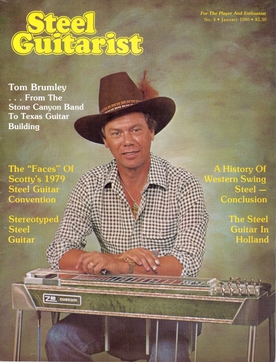
Thomas Rexton Brumley was an American pedal steel guitarist and steel guitar manufacturer. In the 1960s, Brumley was a part of the sub-genre of country music known as the "Bakersfield sound". He performed with Buck Owens and the Buckaroos on hits such as "Cryin' Time" and "Together Again". His solo on "Together Again" received particular acclaim by critics. Brumley later spent a decade with Ricky Nelson and performed on "Garden Party" and the In Concert at the Troubadour, 1969 album.

Ralph Eugene Mooney was an American steel guitar player and songwriter, he was inducted into the Steel Guitar Hall of Fame in 1983. He was the original steel guitarist in Merle Haggard's band, The Strangers and Waylon Jennings's band, The Waylors.
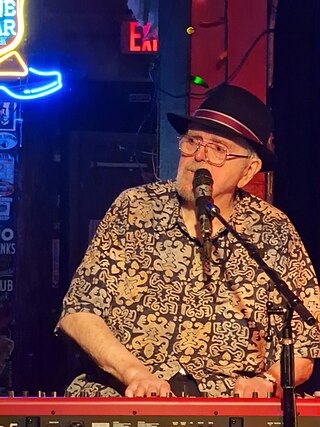
Earl Poole Ball Jr. is an American singer-songwriter, pianist, music producer and actor. His musical work spans the Ameripolitan, Country, Americana and Rockabilly genres. He has performed with many well known American musicians, including Buck Owens & The Buckaroos, Gram Parsons, Carl Perkins, Merle Haggard, Freddie Hart, Marty Stuart, Phil Ochs, Michael Nesmith, Marty Robbins, Wynn Stewart, The Flying Burrito Brothers and The Byrds. He is best known for his 20 years spent touring and recording with Johnny Cash. (1977-1997)

The Cowboy Dave Band is a honky-tonk group, currently based along the Front Range of Colorado. The country quintet was originally formed in 2009 in Omaha, Nebraska, by Cowboy Dave Wilson, who also served as the long-time front man for the cowpunk group FortyTwenty.
"Nothing Was Delivered" is a song written by Bob Dylan that was originally recorded by Dylan and The Band in the Fall of 1967 during the sessions that generated The Basement Tapes. The song was first released by The Byrds on their 1968 album Sweetheart of the Rodeo.












